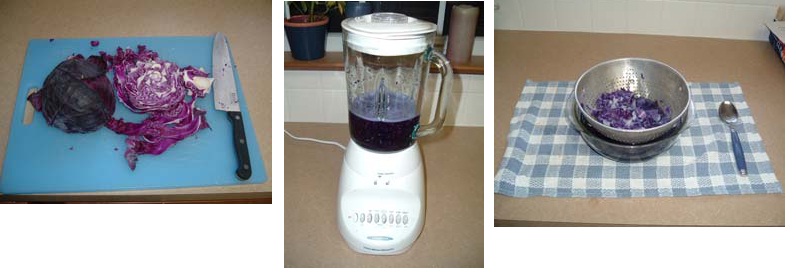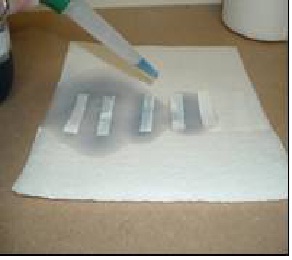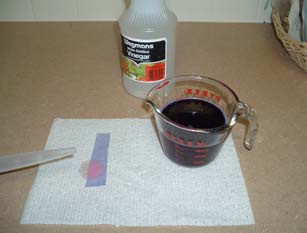





Published on Apr 02, 2024
Some of the most important kinds of chemicals in science are acids and bases. Although you may not realize it, you use acids and bases in your home everyday. You can recognize an acid because it makes food and drinks taste sour. If you have ever tasted something chalky or ever felt a liquid that feels slippery like soap, those substances are probably bases. One way to test if a substance is an acid or base is to test its pH. pH is the scale used in science to rate acids and bases. The scale is numbered from 1 – 12. Acids have a pH between 1 and 6.
Bases have a pH between 8 and 12. If your pH is at 7, that means the substance is neutral, and it is neither an acid nor a base. Just like we use a temperature scale on a thermometer to find out if something is hot or cold, we can use the pH scale to find out if something is an acid or a base. An easy way to do this is to use pH paper, which is a piece of paper with a chemical on it that will change colors if it is mixed with acids or bases.
Some fruits and vegetables contain this special type of chemical. One example is red cabbage. In this activity you will learn how to make your own pH paper using juice from red cabbage. Once you make your red cabbage juice, you will want to know how to use it. If the color of your red cabbage juice is a purple color, then you know that the pH of your solution should be around 7, which means that your solution is neutral.
When you first make the red cabbage juice, the liquid should be this color. When you begin to test the pH of other liquids, the juice will change different colors if it is mixed with an acid or a base. Match the colors you get while you are testing liquids to the chart below to see what pH you have.

• Make red cabbage pH paper
• Use pH paper to test the pH of some common products around the house to determine if they are acidic or basic
• One small head of red cabbage
• Large glass measuring cup
• Blender
• Chopping knife
• Strainer
• Coffee filters
• 2 large glass bowls
• Glass or plastic jar with lid
• Eye dropper or turkey baster
• Household products to test pH (feel free to choose your own. Here are some examples to get you started)
o Orange juice
o Vinegar
o Milk
o Soap
o Baking Soda
o Stomach antacids
o Lemon/Lime juice
o Window Cleaner (see safety notes below)
o Bleach (see safety notes below)
o Powdered laundry detergent
o Aspirin tablet
Note: to test solids or powders with your pH paper, you will first need to dissolve them in a small amount of water
This activity requires the use of sharp cutting utensils. Use caution when handling knives or a blender. Ask an adult to help you if necessary. Red cabbage juice may stain clothes and fabrics. Be sure to protect the area you are working in with plastic or newspaper. Stains on hands and skin will wash off with warm water and soap. This activity involves testing some potentially toxic household chemicals.
Always use household chemicals with adult supervision. NEVER mix household cleaning products together. This may cause a dangerous reaction. Always test each substance separately. Do not eat or drink any of the substances after you have tested them. Dispose of any liquids separately in a sink with plenty of water.
1. Begin by chopping the red cabbage into small pieces until you have about 1 cup of the chopped cabbage.
2. Put the cabbage into the blender with about 1½ cups of water. Blend the water and cabbage until finely chopped.

3. Place a strainer into a glass bowl and pour some of the cabbage mixture into the strainer. Allow the liquid to separate from the cabbage. The solid cabbage can be thrown away. Repeat until all of the liquid is separated from the cabbage.
4. Store your red cabbage indicator in a labeled, sealed jar until you are ready to use it.
1. Cut several coffee filters into 2 x 6 cm strips. Place the strips onto several sheets of paper towel.

2. Using an eyedropper or turkey baster, place a few drops of the red cabbage indicator onto the coffee filter strips in order to cover the strips and allow the pieces to dry before moving onto the next part. Do not drench the strips because they will take too long to dry.
1. Now you are ready to test different substances using your red cabbage pH strips. First, choose a substance that you wish to test.
2. Using a clean dropper, add a couple drops of the substance to the red cabbage pH paper. Do not dip the paper into the main container of your substance. Also, do not add your substance to the main supply of your red cabbage extract.

3. Record your results and throw away your pH strip.
4. Choose another substance to test and repeat steps 2 and 3.
• Obtain Litmus paper from an aquarium supply store. This is a different type of paper that measures pH.
• Test the same substances from the activity above with your litmus paper. Compare the results. Of the two different types of paper, which do you think works better and why?
Acid, bases and pH are an extremely important part of science. Acids and bases affect almost everything around us. In nature, pH plays an important role in survival. For example, if we changed the pH of our bodies by one level, it could kill us. The same goes for most other animals and plants. The environment is also affected by pH. Pollution can cause the pH of rain to be lowered. This is what people call acid rain. Acid rain can ruin buildings and stone, as well as affect plant and aquatic life. Manufacturers are also concerned with acids and bases because they are used to make so many things, including cleaning products and building materials.
1. http://chemistry.about.com/library/weekly/aa012803a.htm
2. http://chemistry.about.com/od/acidsbases/